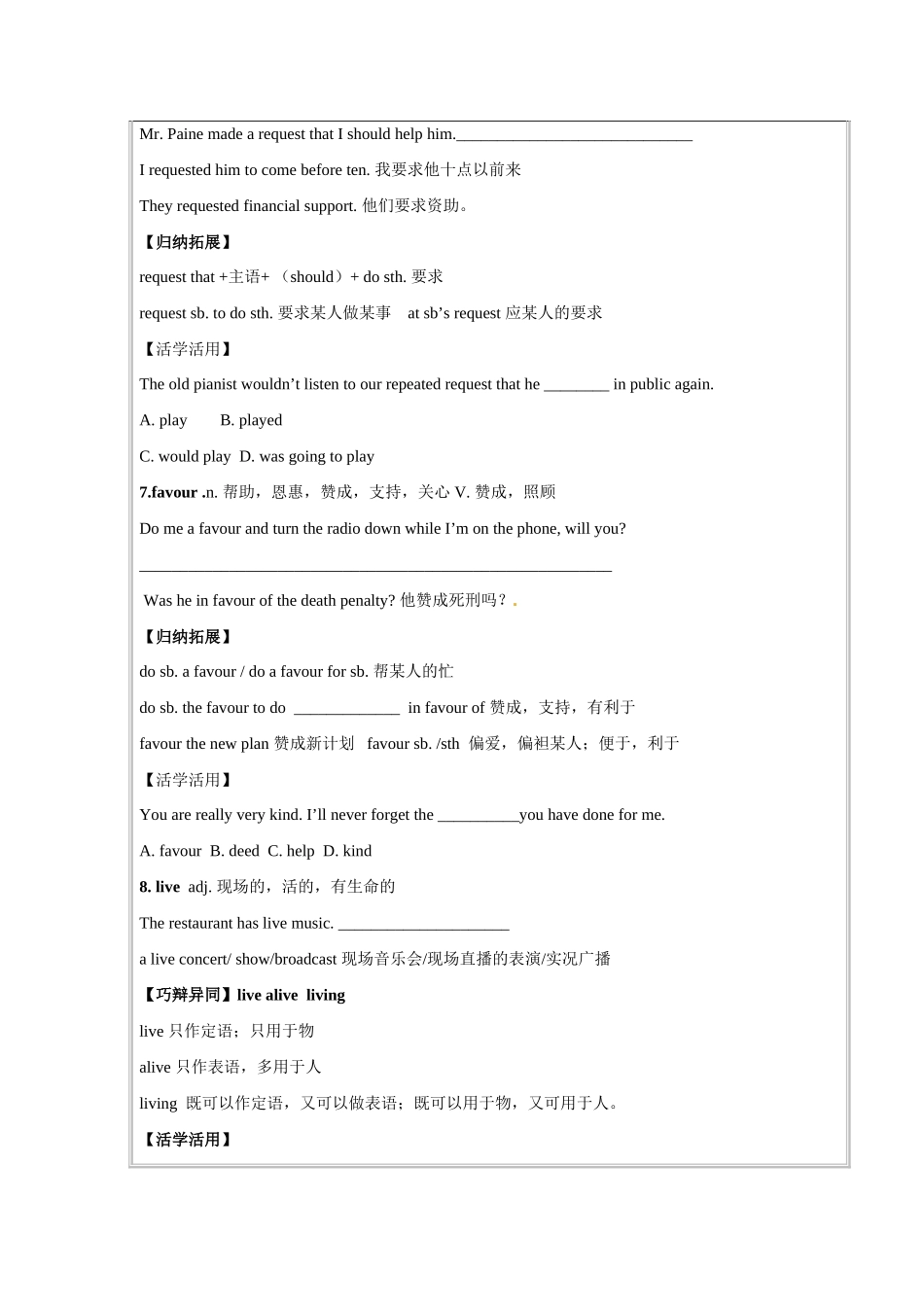2013-2014 高中英语《Module3 Body Language》课中学案(含答案) 外研版必修 4课题Body Language and Non-verbal Communication课时1 课时教学目标1.Revise words and phrases 2. Read and learn more about the text 3.Learn important language points .教学重点learn to use the words,phrases and sentences教学难点Deal with some important new language points.课堂导学Step I. Important words(高频单词)1.communicate V.________________He communicated the information to me.他把信息告诉我了。We haven’t communicated with each other for years. _________________________________________________________________【归纳拓展】communicate…to… 把……传给…communicate with sb. 与某人交流 communication n. 传达,通信,联络,沟通2. vary vt. 改变;使多样化;变化,不同Teachers should vary their lessons to make them more interesting. 为了增加趣味,教师应该使自己的课多样化。He never varied his habits. _________________________________________That sort of thing varies from person to person. 那种事因人而异。【归纳拓展】vary in… 在……方面不同 vary with sth.随着……而变化 vary from… to…在……变动…3. involve v. _________________Don't involve me in your quarrel! 不要把我牵扯进你们的争吵中!His work involves occasional journeys._______________________【归纳拓展】be/get involved in…被卷入……之中;使专注于 be/get involved with sb. 与某人混在一起be involved in doing sth. 专心做某事【活学活用】Putting in a new window will ________cutting away part of the roof.A. include B. involve C. contain D. comprise 4.stare v _________Don't stare at me like that. ______________________________He sat there, staring into the space. 他坐在那儿,凝视着太空。【巧辩异同】stare, look, see, watch, glare, observestare “盯着看,凝视”;眼神很集中look 只强调“看”的动作,不强调结果,可以用于进行时态。see 强调“看见”的结果,不可以用于进行时watch “注视,观看”,指目...


